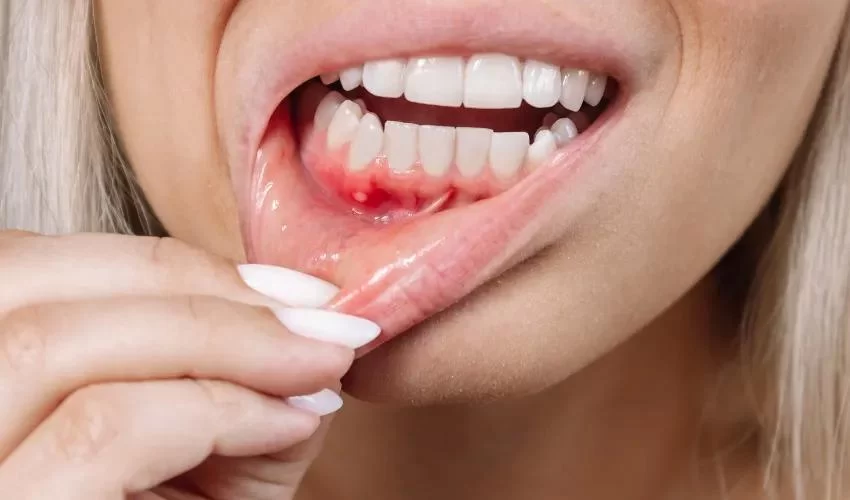
- Understanding Oral Ulcers Caused by Braces
- Practical Methods to Treat Oral Ulcers
- Lifestyle Tips to Prevent Braces-Related Mouth Sores
- Real-Life Case Studies and Professional Insights
- When to See a Dentist for Oral Ulcer Care
1. Understanding Oral Ulcers Caused by Braces
Oral ulcers, often referred to as mouth sores, are a common side effect experienced by many individuals wearing braces. These painful lesions develop due to the constant friction and irritation caused by brackets, wires, and other orthodontic appliances rubbing against the soft tissues inside the mouth. Understanding the root causes of these ulcers is crucial for effective management.
When braces are first fitted or adjusted, the oral mucosa — which includes the inner cheeks, lips, and tongue — can suffer microtrauma. This leads to inflammation and ulcer formation as the tissue attempts to heal from repeated mechanical stress. Additionally, poor oral hygiene and certain food irritants can exacerbate the problem, making ulcers more frequent and painful.
The discomfort caused by oral ulcers can significantly affect eating, speaking, and even smiling, impacting overall quality of life. However, knowing how to treat oral ulcers caused by braces can minimize pain and speed up recovery.
The Science Behind Mouth Sores with Braces
In the initial weeks of orthodontic treatment, the body undergoes an adjustment phase. The braces hardware creates pressure and small injuries to oral tissues. The immune system responds with localized inflammation to repair the damage, but in some cases, this reaction leads to painful ulcerations. The ulcers themselves are typically shallow, round lesions with a white or yellow center and a red inflamed border.
2. Practical Methods to Treat Oral Ulcers
Addressing oral ulcers promptly can alleviate discomfort and prevent secondary infections. Here are several effective strategies to manage and treat mouth sores caused by braces.
2.1 Using Protective Orthodontic Wax
One of the simplest yet most effective remedies is applying orthodontic wax over the brackets or wires causing irritation. This wax creates a smooth barrier between the braces and the oral mucosa, reducing friction and allowing ulcers to heal faster. Regularly replacing the wax ensures ongoing protection during treatment.
2.2 Maintaining Excellent Oral Hygiene
Keeping the mouth clean is essential. Food particles trapped near braces can increase irritation and bacterial growth, worsening ulcers. Using a soft-bristle toothbrush and interdental brushes helps remove debris gently. Mouth rinses containing antiseptic agents, such as chlorhexidine or saltwater rinses, also reduce inflammation and promote healing.
2.3 Applying Topical Medications
Over-the-counter topical gels or ointments containing ingredients like benzocaine, hydrogen peroxide, or corticosteroids can provide temporary pain relief and accelerate healing. It's important to follow instructions carefully and consult a dental professional before use, especially if symptoms persist.
2.4 Dietary Adjustments
Avoiding spicy, acidic, or crunchy foods helps minimize irritation to existing ulcers. Instead, soft, bland foods like yogurt, mashed potatoes, and smoothies can nourish the body without causing further damage to sensitive tissues.
3. Lifestyle Tips to Prevent Braces-Related Mouth Sores
Prevention is always better than cure. Incorporating certain habits into daily life can reduce the likelihood of developing painful oral ulcers during orthodontic treatment.
3.1 Regular Orthodontic Checkups
Frequent visits to the orthodontist allow timely adjustments to braces, reducing excessive pressure and sharp edges that contribute to sores. If wires become loose or brackets break, addressing these quickly prevents prolonged irritation.
3.2 Hydration and Saliva Stimulation
Dry mouth conditions exacerbate mucosal damage. Drinking plenty of water and chewing sugar-free gum can stimulate saliva flow, which naturally protects oral tissues and aids healing.
3.3 Stress Management
Stress is a known trigger for recurrent aphthous ulcers (canker sores), which can complicate braces-related oral ulcers. Mindfulness practices, sufficient sleep, and relaxation techniques can support oral health indirectly.
4. Real-Life Case Studies and Professional Insights
Consider the story of Sarah, a 16-year-old who began orthodontic treatment and experienced severe mouth sores during the first month. Initially, she ignored the pain, resulting in worsening ulcers that affected her eating and school focus. After consulting her orthodontist, she started using orthodontic wax and switched to a saltwater rinse twice daily. Within two weeks, her sores healed significantly. Sarah’s case illustrates how quick intervention and simple remedies can make a substantial difference.
Dental professionals emphasize that while braces may cause discomfort, proactive care dramatically reduces complications. Experts at Dentistry Toothtruth recommend personalized oral ulcer care products and professional advice tailored to each patient’s unique orthodontic journey. Their insights reinforce that understanding and managing braces-related ulcers is essential for a positive treatment experience.
5. When to See a Dentist for Oral Ulcer Care
Most oral ulcers from braces heal within one to two weeks. However, persistent or worsening sores, especially those accompanied by fever, severe pain, or difficulty swallowing, require prompt dental consultation. Such symptoms could indicate infection or other underlying issues that need professional treatment.
Visiting a trusted dental care provider, such as those recommended by Dentistry Toothtruth, ensures that you receive appropriate evaluation and advanced treatment options. Early intervention not only relieves pain but also supports your orthodontic success.
Understanding how to treat oral ulcers caused by braces empowers patients to maintain comfort and oral health throughout their orthodontic treatment. Combining practical home remedies with professional care creates the best environment for healing and ensures a positive, confident smile journey.







 Charles Hunter DMD: Idaho Falls Dental Group0.0 (0 review)
Charles Hunter DMD: Idaho Falls Dental Group0.0 (0 review) Community Health Center of Snohomish County - Everett-North Clinic4.0 (960 review)
Community Health Center of Snohomish County - Everett-North Clinic4.0 (960 review) Children's Dentistry of Trappe4.0 (491 review)
Children's Dentistry of Trappe4.0 (491 review) Reardon Dental4.0 (557 review)
Reardon Dental4.0 (557 review) Tascha Z. Fuchs, DDS5.0 (63 review)
Tascha Z. Fuchs, DDS5.0 (63 review) Holbert Family Orthodontics5.0 (467 review)
Holbert Family Orthodontics5.0 (467 review) The Importance of Oral Health Education During Pregnancy for a Healthy Pregnancy
The Importance of Oral Health Education During Pregnancy for a Healthy Pregnancy Best Tips for Brushing Your Teeth Properly for Healthy Gums: Essential Techniques for Oral Health
Best Tips for Brushing Your Teeth Properly for Healthy Gums: Essential Techniques for Oral Health Why Skipping Dental Checkups Can Lead to Bigger Oral Health Problems
Why Skipping Dental Checkups Can Lead to Bigger Oral Health Problems Advantages of Porcelain Dental Restorations
Advantages of Porcelain Dental Restorations How Can Diabetes Cause Tooth and Gum Problems? Preventing and Managing Oral Health Issues
How Can Diabetes Cause Tooth and Gum Problems? Preventing and Managing Oral Health Issues Healthy Habits for Promoting Good Oral Health and Hygiene: Tips for a Healthy Smile
Healthy Habits for Promoting Good Oral Health and Hygiene: Tips for a Healthy Smile